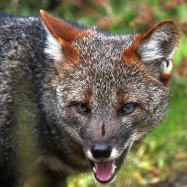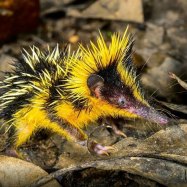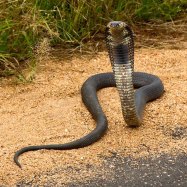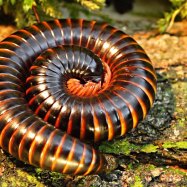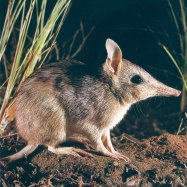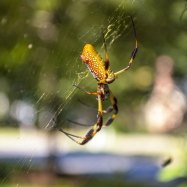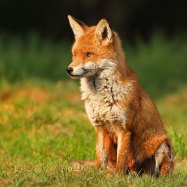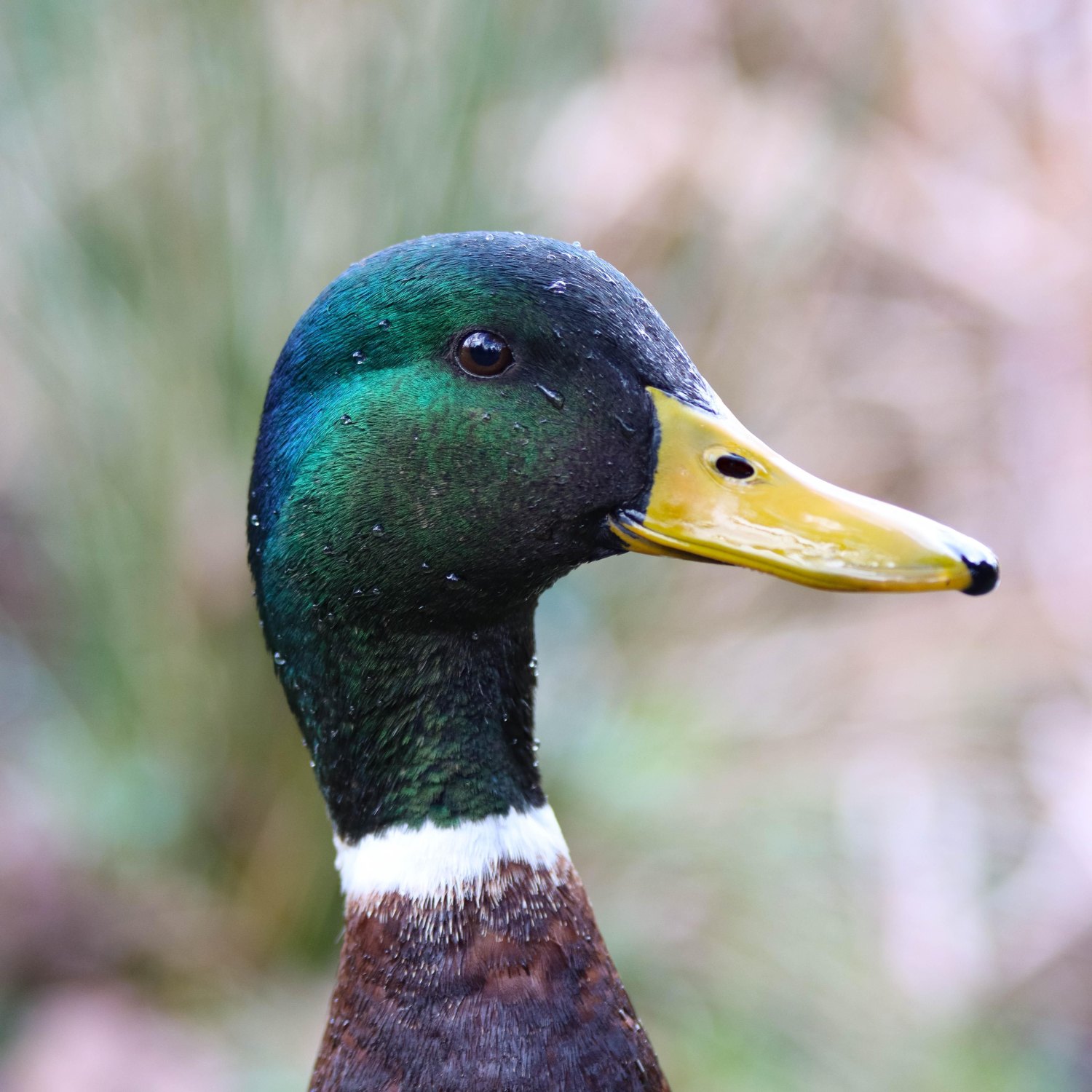
Mallard
20-26 inches
The mallard, a medium-sized waterfowl with a compact, streamline body, is a familiar sight worldwide. Belonging to the Anatidae family, these ducks can grow up to 20-26 inches in length. With their vibrant plumage and unique quacks, these birds are a delight to observe in their natural habitat. #animals #nature #mallard #duck #wildlife
Animal Details Summary:
Common Name: Mallard
Kingdom: Animalia
Habitat: Wetlands, marshes, ponds, rivers, lakes
The Marvelous Mallard: A Versatile and Adaptable Waterfowl
From the tranquil ponds of Central Park to the vast lakes of North America, the mallard is a common sight in many bodies of water worldwide. With its striking green head and compact body, it is easy to spot and identify. But beyond its distinct appearance, this bird has many fascinating features that make it a truly remarkable animal. In this article, we will explore the world of the mallard and discover what makes it one of the most versatile and adaptable waterfowl in the world Mallard.A Commonly Seen Yet Mysterious Bird
The mallard, also known by its scientific name, Anas platyrhynchos, is a member of the avian family Anatidae, which includes ducks, geese, and swans. It is also referred to as the common mallard or wild duck, as it is one of the most abundant and widespread duck species in the world.Although commonly seen in urban and suburban areas, many people know very little about this bird's natural habitat, feeding habits, and origin. Let's take a closer look at these aspects to better understand this fascinating waterfowl.
From Wetlands to Urban Parks: The Mallard's Preferred Habitat
Mallards can be found in a variety of wetland habitats, including marshes, ponds, rivers, and lakes. They are highly adaptable and can thrive in both natural and man-made environments. This ability to adjust to different habitats has allowed them to expand their reach to almost every corner of the world.However, their preferred habitat remains wetlands that offer both water and vegetation, as these provide them with food, shelter, and breeding grounds. Wetlands are crucial ecosystems that support a wide variety of species, and the presence of mallards is an essential part of these delicate ecosystems Mozambique Spitting Cobra.
A Diverse Omnivorous Diet: From Plants to Insects
Mallards are omnivores, meaning they eat both plant and animal matter. Their diet varies depending on the season and the availability of food. In the summer, they primarily feed on aquatic plants such as duckweeds, sedges, and pondweeds. However, during the colder months, they switch to a diet consisting mainly of grains, seeds, and roots.In addition to plant matter, mallards also consume insects, snails, and small fish, which they catch by diving underwater or by foraging on the ground. This diverse diet makes them a vital link in the food chain, and their presence benefits the ecosystem as a whole.
The Mystery of the Mallard's Origin
One of the most curious aspects of the mallard is its origin. While it is commonly found in North America, Europe, and Asia, its original country of origin remains unknown. The speculation is that it may have originated in North America, as fossils of similar ducks dating back to the Pliocene era have been found in California.However, other theories suggest that the mallard may have originated in Asia or Europe, as some ancient artwork and writings depict the bird in these regions. Despite the ongoing debate about its origin, one thing is for sure: the mallard has been a migratory bird throughout history, and its ability to adapt has allowed it to thrive in various regions.
The Distinctive Appearance of the Mallard
One of the most striking features of the mallard is undoubtedly its appearance. Let's take a closer look at its coloration, body shape, length, and weight.A Vibrant Yet Discreet Plumage
Mallards are sexually dimorphic, meaning males and females have different appearances. Male mallards, also called drakes, have a distinct green head, white neck ring, and gray body, with a brownish chest and orange legs. This colorful plumage serves as a camouflage during the breeding season, as it allows them to blend in with the vegetation.On the other hand, female mallards, also known as hens, have a mottled brown plumage with hints of blue on their wings. This coloration helps them blend in with their surroundings to protect themselves and their young from predators.
A Compact and Streamline Body
Mallards have a medium-sized body that is compact and streamline, allowing them to swim and maneuver through the water with ease. This body shape also makes them excellent divers, as they can submerge quickly to find food or evade danger.In addition to their compact body, mallards also have a small, round head, a long and broad bill, and short, muscular legs. This combination of physical characteristics makes them highly efficient at swimming, flying, and feeding.
The Length and Weight of the Mallard
Male mallards are generally larger than females, with an average length of 20-26 inches and a weight of 1.5-3.5 pounds. Female mallards, on the other hand, have an average length of 18-20 inches and weigh 1-2.5 pounds. These measurements may vary slightly depending on the subspecies and geographical location.The Mallard's Fascinating Mating and Nesting Habits
The breeding season for mallards begins in the fall and continues into early spring. During this time, male mallards compete for females by displaying their striking plumage and engaging in elaborate courtship rituals. These rituals involve head bobbing, tail wagging, and loud quacking to attract potential mates.Once a pair has formed, the female selects a suitable nesting site, usually near water, and builds a nest from plant materials and feathers. A typical nest may have 6-15 eggs, and the female incubates them for 27-30 days. Once the chicks hatch, they are ready to leave the nest almost immediately and are capable of swimming and diving within hours.
A Common Yet Vital Member of the Ecosystem
While the mallard may seem like a common and unassuming bird, it plays a vital role in the ecosystem. Its omnivorous diet helps maintain a balance in the food chain, and its preferred wetland habitat provides a home for countless other species.However, like many other species, mallards face threats such as habitat destruction, climate change, and hunting. These challenges can have a significant impact on their population and overall well-being. It is essential to protect and preserve their natural habitats to ensure their continued presence and contribution to the ecosystem.
In Conclusion
The mallard is a versatile and adaptable waterfowl that has captivated the world for centuries. From its vibrant coloration to its diverse diet and intriguing mating habits, it is no wonder that this bird remains a subject of fascination for many. As we continue to learn more about the mallard, we must also do our part to ensure its conservation and protection for future generations to appreciate and admire.

Mallard
Animal Details Mallard - Scientific Name: Anas platyrhynchos
- Category: Animals M
- Scientific Name: Anas platyrhynchos
- Common Name: Mallard
- Kingdom: Animalia
- Phylum: Chordata
- Class: Aves
- Order: Anseriformes
- Family: Anatidae
- Habitat: Wetlands, marshes, ponds, rivers, lakes
- Feeding Method: Omnivorous
- Geographical Distribution: North America, Europe, Asia
- Country of Origin: Unknown
- Location: Worldwide
- Animal Coloration: Mostly green head with white neck ring, gray body, brownish chest, orange legs
- Body Shape: Medium-sized waterfowl, compact and streamline body
- Length: 20-26 inches

Mallard
- Adult Size: Medium-sized
- Average Lifespan: 5-10 years
- Reproduction: Sexual reproduction
- Reproductive Behavior: Monogamous
- Sound or Call: Males make a low, raspy call, females have a quacking call
- Migration Pattern: Migratory, with some resident populations
- Social Groups: Flocks
- Behavior: Gregarious, active during the day
- Threats: Hunting, habitat loss, pollution
- Conservation Status: Least Concern
- Impact on Ecosystem: Seed dispersal, insect control
- Human Use: Hunting, ornamental purposes
- Distinctive Features: Male has a distinctive green head and white neck ring
- Interesting Facts: Mallards are the ancestors of most domestic ducks
- Predator: Various predators including foxes, raccoons, and birds of prey
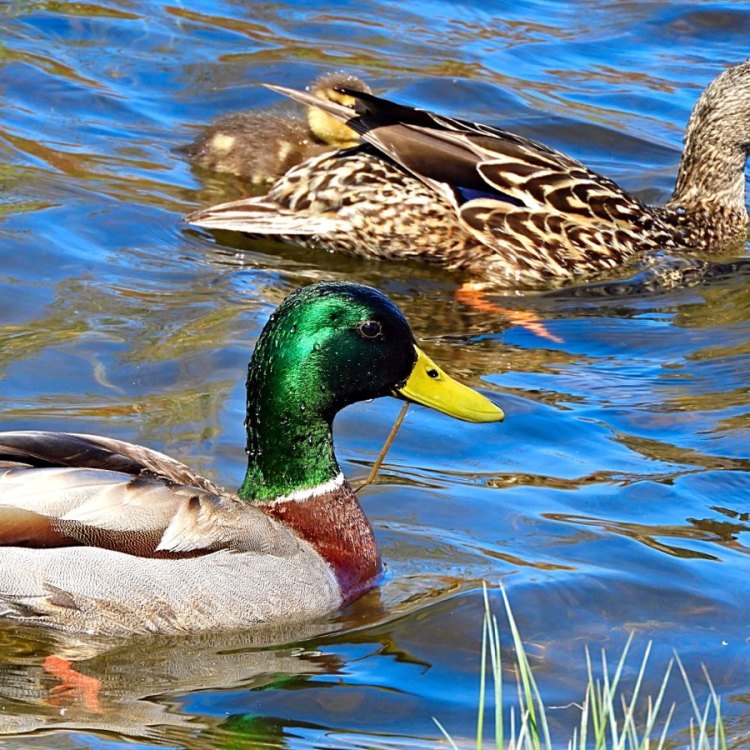
Anas platyrhynchos
The Enigmatic Mallard – The Social and Adaptive Bird of Mystery
The mallard, known by its scientific name Anas platyrhynchos, is a medium-sized duck with a wide distribution across the world. It is a familiar sight in parks, ponds, and lakes, but this seemingly ordinary bird has a wealth of intriguing traits and behaviors that make it a fascinating species to study.With an average lifespan of 5 to 10 years, the mallard is a resilient bird that has successfully adapted to various environments, making it one of the most adaptable waterfowl in the world. This article will delve into the unique features and behaviors of the mallard, shedding light on its crucial role in the ecosystem and its fascinating history PeaceOfAnimals.Com.
Size and Appearance
The mallard is a medium-sized duck, with an average length of 20-28 inches and a wingspan of 32-39 inches. Male mallards, also known as drakes, are larger in size and weigh around 1.5-3 pounds, while females, called hens, are smaller and weigh around 1-2 pounds. They have a streamlined body, long neck, and webbed feet, perfect for their aquatic lifestyle.One of the most distinct features of male mallards is their vibrant green head with a white neck ring, while females have mottled brown plumage. However, in non-breeding plumage, both sexes look similar, with brown and buff-colored feathers.
Reproduction and Behavior
The mallard reproduces through sexual reproduction, with the breeding season usually occurring between March and June. During the breeding season, males display courtship behavior, such as head dipping, tail wagging, and vocalizations, to attract a female mate.Once a pair forms, they will remain monogamous for the breeding season, but they may find new mates in the following year Malayan Civet. However, some mallards may also form lifelong pair bonds. The female will lay a clutch of 8-13 eggs, which she will incubate for around 28 days, while males protect the nest and surrounding area.
Sound and Migration
Male mallards are known for their low, raspy call, while females have a distinct quacking sound. These vocalizations are used to attract a mate, communicate with other ducks, and as an alarm call to warn of potential danger.The mallard is a migratory bird, with some resident populations in warmer regions. Mallards in North America tend to migrate southward during the winter, while European mallards migrate to the Mediterranean and North Africa. However, even migratory mallards may remain in an area if there is abundant food and suitable habitat.
Social Groups and Behavior
Mallards are highly social birds that form flocks, usually made up of a few pairs or a group of several hundred ducks. While they primarily forage for food during the day, mallards are also active at night. They are gregarious, meaning they prefer to live in groups, and they rely on their social connections for protection and survival.These ducks are also highly adaptable and can live in a variety of habitats, from wetlands to urban areas. They have even been known to nest on city rooftops. However, mallards are most commonly found near shallow, freshwater ponds, lakes, and rivers.
Threats and Conservation Status
The mallard is classified as "Least Concern" on the International Union for Conservation of Nature (IUCN) Red List, meaning it is not currently at risk of extinction. However, the mallard still faces several threats, including hunting, habitat loss, pollution, and climate change.Hunting is the most significant threat to mallards, with an estimated 16 million ducks hunted annually in the United States alone. Habitat loss due to urbanization and agricultural development also poses a significant risk to the mallard's survival. Pollution, specifically lead poisoning from ingesting lead pellets used in hunting, is also a concern for mallards and other waterfowl.
Conservation efforts, such as restoring wetlands and implementing hunting regulations, have helped increase the mallard population. However, continuous monitoring and conservation efforts are crucial to ensuring the long-term survival of this species.
Impact on Ecosystem and Human Use
Mallards play a vital role in the ecosystem, particularly in wetland habitats. As seed dispersers, they help maintain plant diversity, and their foraging also helps control insect populations. Moreover, mallards provide an essential food source for predators, such as foxes, raccoons, and birds of prey, helping to maintain a balanced ecosystem.Humans have long been fascinated by the beauty of the mallard, leading to its use for ornamental purposes and hunting. As early as 2500 BC, ancient Egyptians depicted the mallard in their artwork, and it remains a popular species for hunting today. However, hunting regulations and conservation efforts have helped sustain the mallard population and ensure its continued use by humans.
Interesting Facts
Mallards are full of intriguing facts and histories, some of which may surprise you. For example, did you know that:- Mallards are the ancestors of most domestic ducks, and they have been bred with other species to produce the many domestic duck breeds we know today.
- Mallards mate and lay eggs in trees, up to 30 feet above the ground.
- Mallards have a special gland near their tail that produces oil to make their feathers waterproof.
- Mallards can fly at speeds of up to 55 miles per hour.
- Male mallards molt their bright plumage in the summer, becoming nearly indistinguishable from females.
In Conclusion
The mallard may seem like an ordinary bird, but upon closer inspection, it is a fascinating species with unique features and behaviors. From its adaptability and social nature to its important role in the ecosystem, the mallard continues to captivate and intrigue scientists and bird enthusiasts.However, as with many other species, the mallard faces several threats that require ongoing conservation efforts to protect its population. With its resilience and adaptability, this enigmatic bird serves as a reminder of the remarkable wonders of nature and our responsibility to preserve it for generations to come.
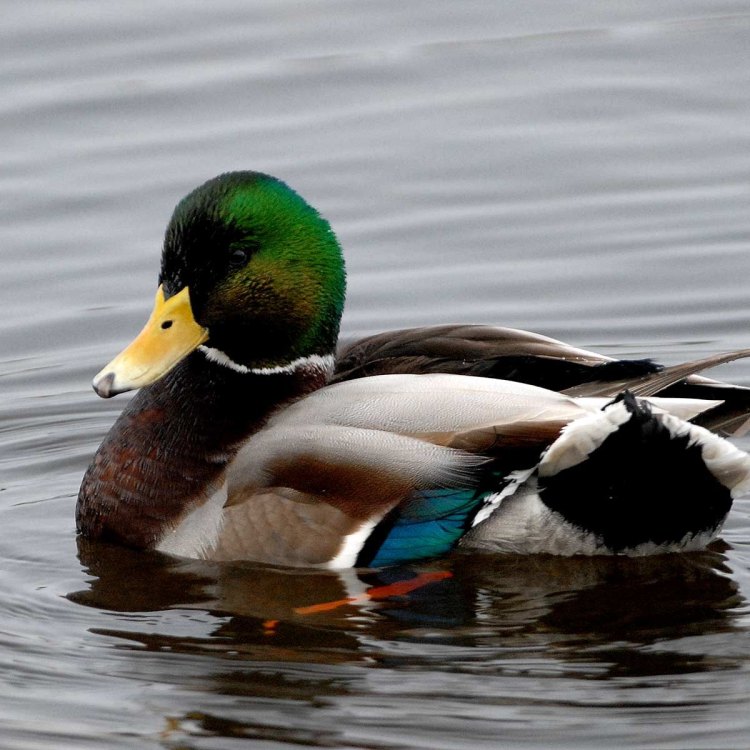
The Marvelous Mallard: A Versatile and Adaptable Waterfowl
Disclaimer: The content provided is for informational purposes only. We cannot guarantee the accuracy of the information on this page 100%. All information provided here may change without prior notice.

